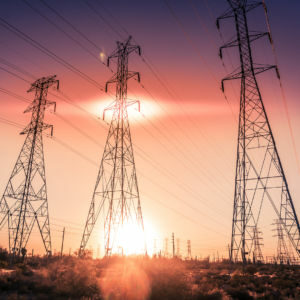Across the country, U.S. power supplies have been pushed to the limit this summer. New electricity demand records are set daily and the very power plants doing the lion’s share of the work to keep homes cool, the lights on and the gears of industry turning are in the crosshairs of a regulatory assault from the U.S. Environmental Protection Agency (EPA).
EPA has launched a multi-pronged blitz at the U.S. coal and gas power plant fleets that threatens to dismantle nearly 60 percent of the nation’s power supply nearly overnight. The U.S. coal fleet – a reliability backstop that regularly fills power supply gaps when other sources cannot – is facing six rules with one outcome in mind: close plants.
Headlining this blitz is the Clean Power Plan 2.0 that is both unworkable and unlawful. The prosed rule aimed at the power sector’s carbon emissions would force coal and gas plant owners to make decisions almost immediately about the future of their plants and the adoption of technologies that – despite EPA’s claims otherwise – are nowhere near ready for commercial deployment.
Consider EPA’s carbon capture and storage (CCS) mandate. As important as CCS is to the world’s energy future, mandating its use at the nation’s coal plants by 2030 and claiming that it’s adequately demonstrated and commercially viable, which is required by law, doesn’t pass the laugh test. There is one coal plant in the world capturing carbon at the level EPA requires and it’s not even in the U.S.
Based on EPA’s proposed timeline, plant owners would need to install carbon capture at power plants, build required infrastructure – such as pipelines and injection wells – and permit them all in just five years. Not only does the infrastructure to transport carbon dioxide not exist, EPA itself admits 19 states – including several home to a significant share of the coal fleet – have no potential for storage at all.
It should be no surprise then that the Clean Power Plan 2.0 is facing fierce congressional opposition. Thirty-nine Republican senators have called upon EPA to withdraw the plan arguing that EPA is once again overstepping its authority under the Clean Air Act and is attempting to transform the nation’s power sector without clear and explicit authorization from Congress.
Further, in a series of congressional hearings, policymakers have expressed deep concern over the impact EPA’s regulatory blitz will have on grid reliability, weighing testimony from the nation’s top energy regulators, electricity market operators and utilities. All four members of the Federal Energy Regulatory Commission (FERC) testified to the coal fleet’s ongoing importance to maintaining grid reliability. Even FERC Chairman Willie Philips, handpicked by the Biden administration, said, “I am extremely concerned about the pace of retirements we are seeing of generators which are needed for reliability on our system.”
While the nation’s grid reliability experts and those tasked with keeping the lights on are expressing deep concern over the loss of essential coal and natural gas plants, EPA is throwing caution to the wind and only hitting the accelerator.
This November, FERC will be holding a reliability conference where it will be taking a close look at the Clean Power Plan 2.0 and other “policy issues” that will have a direct impact on the nation’s already shaky grid. FERC now has a deeply important opportunity to address the full blitz of rules that make up EPA’s regulatory agenda and how they’re on a collision course with eroding grid reliability, surging electricity demand from electrification and the immense challenge of safely integrating intermittent sources of power.
A reliable and affordable power supply is something Americans have come to take for granted but it now hangs in the balance, under assault from a series of extraordinarily irresponsible policy decisions. If the Biden administration is unwilling to recognize the danger it’s putting Americans in, it’s up to Congress to ensure getting to our energy future doesn’t mean wrecking our energy present.





